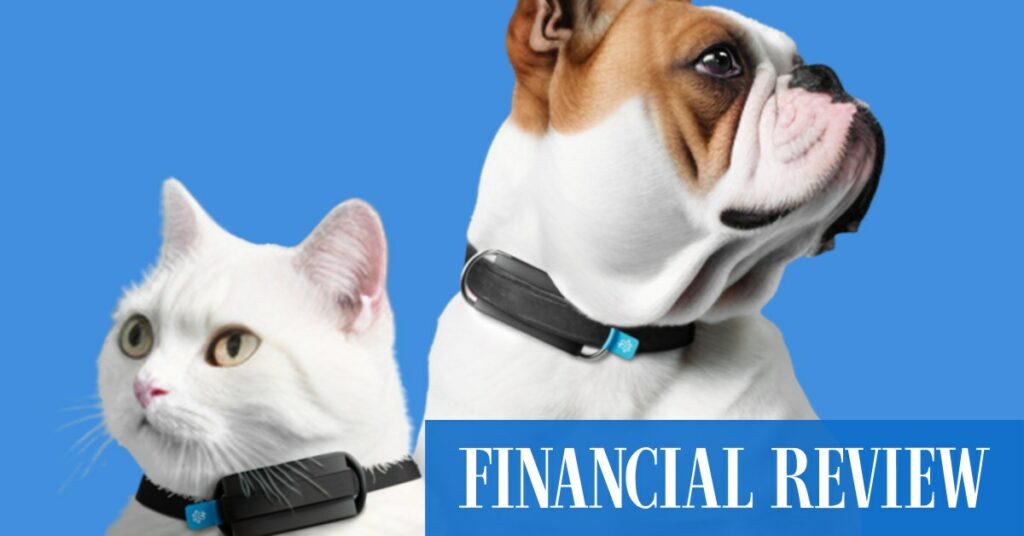Invoxia, a GPS tracker company, announced its Minitailz pet collar that tracks the movement, heart rate, respiratory rate and sleeping habits of cats and dogs, just like the health trackers that have abounded for humans, and then uses ChatGPT-style large-language models to create weekly summaries of your pet’s wellbeing.
The collars also have AI built into them, which summarises data collected on the device to minimise how much information the collars have to send over the mobile phone system they’re connected to, officials said.
Another pet-friendly start-up, Ogmen Robotics, showed off a robot that uses AI to follow pet dogs around the house, keeping an eye on their mood and initiating games if the AI detects the dog is bored or has separation anxiety, company officials told The Australian Financial Review.
When dogs are restless, the robot can shoot a tennis ball out of its chest, which dogs can be trained to return to a chute in the back of the robot, keeping the game of fetch going as long as the dog wants.
AI is also used by the robot to synthesise the owner’s voice, to help calm the dog or relay messages typed into a phone by the owner, who can view their pet through cameras mounted on the bot.
At a preview of some of the more niche, some-might-say whackier inventions that will be on display at CES, there were bathroom mirrors with embedded AI that can determine the gazer’s mood and recommend appropriate exercises; earbuds that use embedded AI to do real-time language translation; even toothbrushes that purport to use AI to monitor how well you’re brushing your teeth.
But at the same preview, all manner of virtual-reality-related devices were on show, too, hinting at another trend that looks set to colour 2024.
With Apple expected to release its Vision Pro mixed-reality headset this year, and Samsung and Google having announced they’re collaborating on an “extended-reality” (XR) headset due later this year, Meta having launched a high-end XR headset at the end of 2023, and chip giant Qualcomm having announced a new XR chip that’s expected to match Apple’s Vision Pro for quality, 2024 might finally be the year when virtual reality becomes a reality for everyday consumers.
And at CES, there are gadget makers lined up to capitalise on that.
A start-up known as bHaptics showed off a bodysuit, like body armour only electronic, that lets people experience virtual reality not just through their eyes, but through their torso and hands, too.
Forty “vibro-tactile” motors embedded in the suit create physical feedback in VR games, similar to the way small motors in smartphones provide “haptic” feedback when users type on the screen.
Another start-up, Palmplug, had a pair of haptic gloves that were primarily designed for physical therapy but that also provide haptic feedback and hand tracking inside virtual reality applications, officials said.
John Davidson is in Las Vegas as a guest of Hisense.
>>> Read full article>>>
Copyright for syndicated content belongs to the linked Source : Australian Financial Review – https://www.afr.com/technology/what-to-expect-from-your-gadgets-in-2024-20240108-p5evsi
